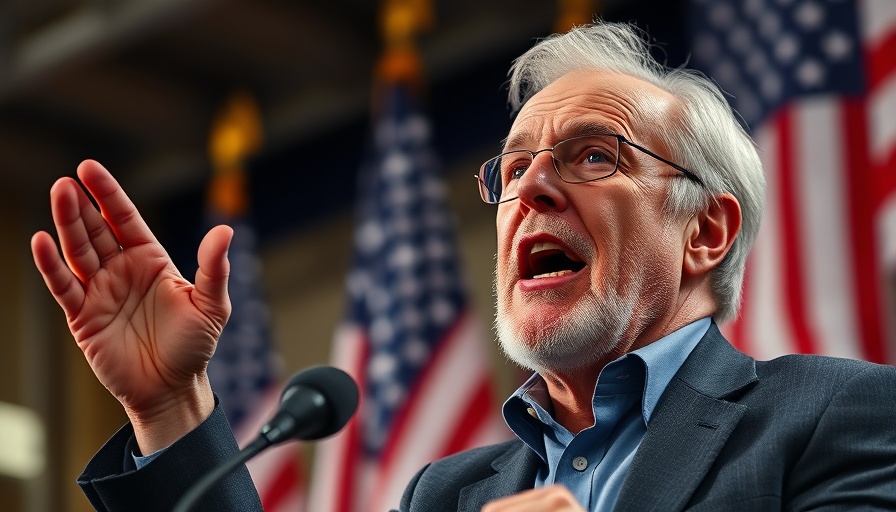
Analyzing Trump's Health Claims: What Science Really Says
In a world where misinformation can spread faster than fact, it's vital to dissect the recent viral phenomena surrounding former President Donald Trump's reported physical statistics. Following a TikTok video where ChatGPT labeled Trump's weight and body composition as 'virtually impossible,' a fresh wave of scrutiny has reignited discussions about health standards and age-related fitness.
The Health Paradox: Real Numbers or Hype?
Trump’s supposed stats—6’3” tall and weighing 215 pounds—might not seem alarming at first glance. But when we consider the accompanying claim of having only 4.8% body fat, the scientific community raises a brow. ChatGPT's analysis underscores a significant issue: these metrics are typically observed in elite athletes or bodybuilders, not in a 78-year-old man presumed to lead a sedentary lifestyle. For the average adult, maintaining such low body fat at this age, especially without an active regiment, creates what experts call a 'biological paradox.'
Understanding Body Composition
Body composition—the ratio of fat to lean mass—is a critical indicator of physical health. For adults, a healthy body fat percentage varies, with values between 10% to 22% considered acceptable for men and 20% to 32% for women. At an age where muscle mass naturally diminishes, Trump's alleged physical stats challenge the typical aging process. Proper nutrition, consistent exercise, and genetics all play pivotal roles in maintaining a healthy composition; factors that seemingly conflict with the reported numbers.
The Role of Healthy Living in Fitness
This situation invites a broader discussion about health, especially within the context of age. Embracing a holistic approach to fitness can play a crucial part in realistic health narratives. Incorporating various elements—from balanced diets rich in whole foods to mental health strategies like meditation—creates a sustainable lifestyle. Instead of focusing solely on weight, we can aim for a well-rounded approach encompassing mental clarity and emotional well-being.
Common Misconceptions About Aging and Fitness
One significant misconception is that aging automatically equates to a decline in one’s physical condition. While age does bring challenges, such as reduced recovery time and decreased muscle mass, it shouldn’t deter individuals from pursuing active lifestyles. Seniors today have access to diverse wellness options, including yoga, Pilates, and HIIT workouts designed to preserve strength and flexibility.
Practical Tips for Maintaining Optimal Health
For those inspired to take charge of their health, here are actionable tips:
- Nutrition: Opt for a balanced diet filled with nutrient-dense foods. Meal prep can simplify this process and encourage healthy eating habits.
- Regular Exercise: Incorporate resistance and aerobic training. Aim for at least 150 minutes of moderate-intensity aerobic activity weekly.
- Mindfulness and Stress Management: Include relaxation techniques such as meditation to improve mental well-being.
- Health Tracking: Use technology, such as fitness trackers, to monitor your activity and adjust as necessary.
A New Perspective on Health Narratives
As we dissect health claims, it’s essential to approach them with skepticism balanced by open-mindedness. The narrative surrounding Trump’s physical statistics serves as a reminder of the importance of evidence-based discussions about health.
Conclusion: The Call for Real Conversations About Wellness
The viral attention generated by ChatGPT's analysis opens the door for necessary conversations about fitness metrics and their implications, particularly for older individuals. By discussing realistic health expectations and pursuing well-being through balanced practices, we enhance our understanding of what it means to be healthy, both physically and mentally. Let’s embrace the ongoing journey of wellness and encourage healthy habits that resonate across generations.
 Add Row
Add Row  Add
Add 




Write A Comment